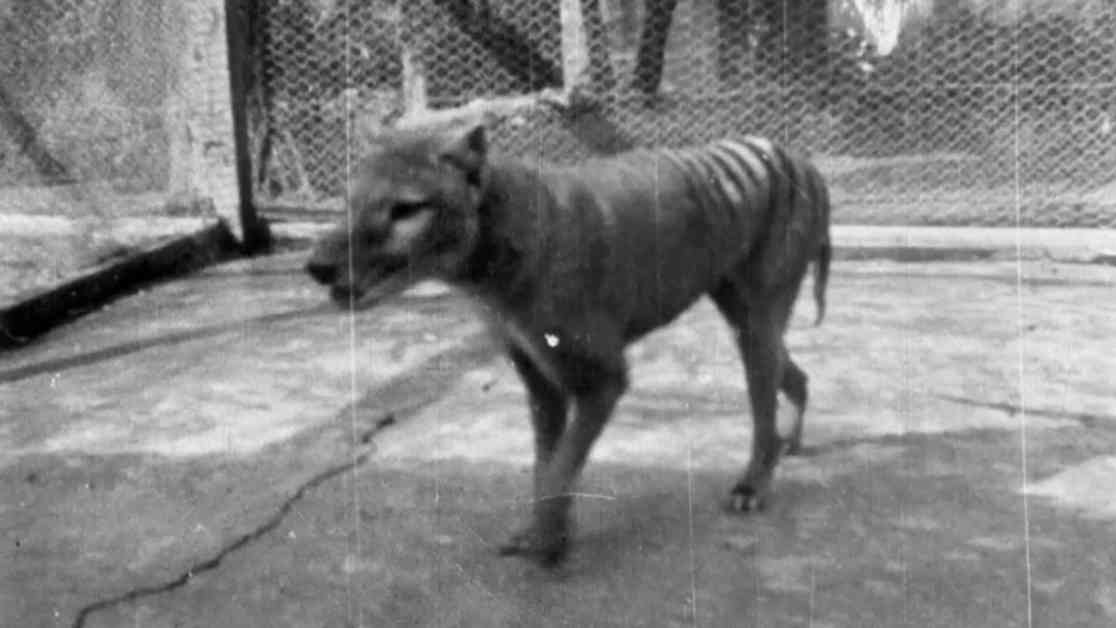The Tasmanian tiger, also known as the thylacine, was a wolf-like marsupial that roamed the forests of Tasmania. Unfortunately, the last known Tasmanian tiger died in a Hobart zoo in 1936 after being hunted to extinction to protect Tasmania’s livestock industry. However, there is hope for the species as a team of US and Australian researchers, led by Colossal Biosciences, has made significant scientific breakthroughs that could potentially bring the Tasmanian tiger back from extinction.
Colossal Biosciences, a Dallas-based company, has announced plans to use the latest advances in gene editing and reproductive biology to revive extinct species such as the woolly mammoth and the dodo. The team has managed to extract a DNA sequence from a 108-year-old thylacine specimen preserved in alcohol at a museum in Melbourne, which they claim is 99.9% similar to the original genetic code of the Tasmanian tiger. This breakthrough has allowed them to study the thylacine’s genes and gain insights into its taste, smell, vision, and brain function.
To resurrect the Tasmanian tiger, the researchers are using gene editing techniques to modify the genome of the closest living relative of the thylacine, the fat-tailed dunnart. By making over 300 genetic edits to dunnart cells in the lab and mastering the art of inducing ovulation and growing embryos outside the womb, the team hopes to create a creature that closely resembles the extinct Tasmanian tiger. While this approach has received criticism from some conservationists who argue that funds should be allocated to preserving current endangered species and habitats, others see it as an opportunity to advance scientific knowledge and potentially protect other threatened species like the Tasmanian devil.
Despite the challenges and ethical concerns surrounding de-extinction, the researchers at Colossal Biosciences remain optimistic about the project. The advancements made in marsupial IVF for the Tasmanian tiger could have broader applications across the marsupial family tree, benefiting efforts to conserve and protect other endangered species. While some scientists view de-extinction as a “fairy tale science,” others believe that the research could offer valuable insights into long-extinct species and contribute to the preservation of their DNA for future studies.
In conclusion, the potential revival of the Tasmanian tiger through de-extinction efforts represents a significant scientific milestone that could have far-reaching implications for conservation and genetic research. As technology continues to advance, it remains to be seen whether the iconic marsupial will once again roam the forests of Tasmania or if its legacy will live on through scientific discovery and conservation efforts.










